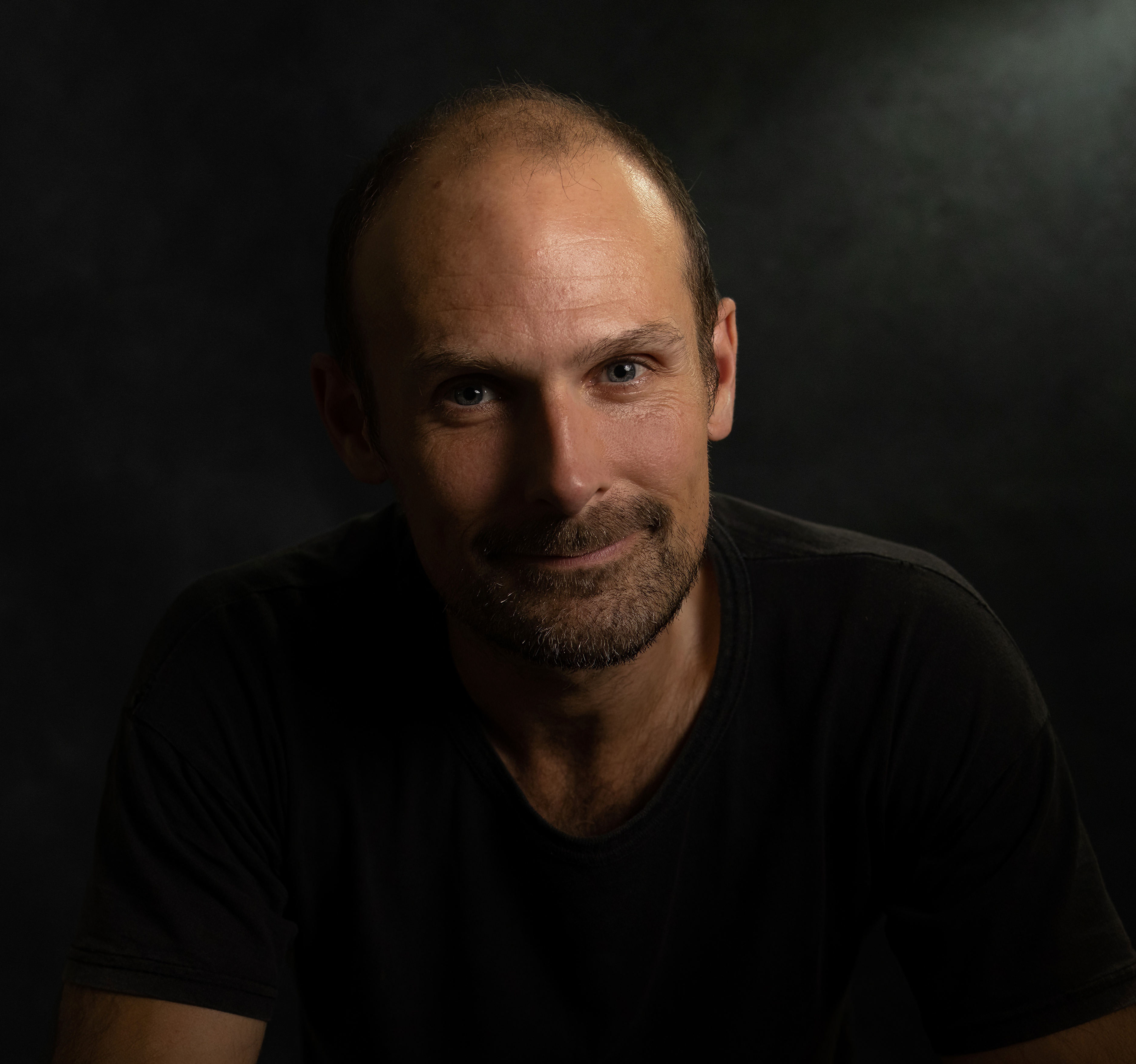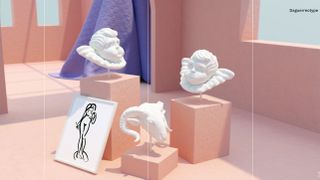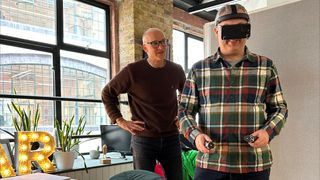
Jump to the quick list↴
1. The best vector software
2. Image editing & drawing
3. The best 3D software
4. The best data viz software
FAQs
How to choose
How we test
The best graphic design software makes life easier by automating dull, routine tasks (often with the help of AI) and giving us more scope to be creative. They include expensive, industry-standard tools like Adobe Photoshop, but increasingly newer and cheaper software are giving these packages a run for their money, so we've considered these, too, in compiling our list.
We've put our experts to work testing and reviewing a wide range of options, and we've drawn on their conclusions to bring together our guide to the best graphic design software below.
Meanwhile, if you're looking something in a different specialist area, check our guides to the best digital art software and the best video editing apps.
Quick list
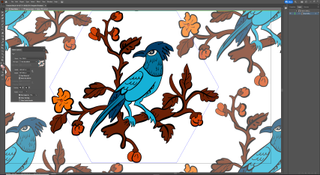
Best vector software
Adobe Illustrator is the best graphic design software for vector drawing and editing. Regular updates have kept it ahead of rivals with clever AI, and it also remains the industry-standard software.
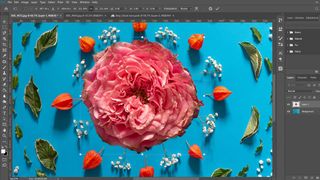
Best image editor
Photoshop dominates the profession when it comes to image editing. Plus it can do a lot more; from drawing and painting to 3D modelling and UX design. Some smart AI features help speed up your workflow too.
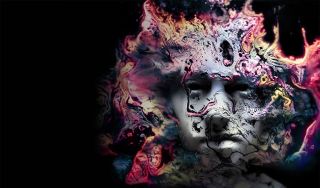
Best 3D software
Autodesk Maya is the best graphic design software for 3D work, and is commonly used across the industry, right up to top studios like Pixar or Framestore, as it covers pretty much the entire 3D workflow.
The best graphic design software
Why you can trust Creative Bloq
The best vector software


Specifications
Reasons to buy
Reasons to avoid
If you want the best graphic design software for vector drawing and editing, then really you'll want Adobe Illustrator. Regular updates have kept it ahead of growing competition in terms of the range of features and tools (including the addition of Firefly AI), and it also remains the industry-standard software, meaning that if you're working or anyone other than yourself, you'll probably be expected to use it for vector design work.
Illustrator allows you to create everything from illustrations to logos with a lot of creative freedom. It also has a lot of useful features and shortcuts to help speed up your workflow. The learning curve is fairly steep initially, but we think that once you know your way around the program, it offers a pleasant interface to use. We've also been pleased with some of the latest updates Adobe has made to allow customisation of the toolbar. It's also added Rotate View and a Width Tool that makes it simple to add variations to vector lines. There's also a new
The only downside we can see really is that Illustrator is part of Adobe Creative Cloud, which means that it's only available via a monthly subscription, either for Illustrator alone or to Adobe's full suite of creative apps, which includes Photoshop, InDesign and more. This has its advantages in that you automatically get all the latest updates to the software but it also makes Illustrator quite a lot more expensive than comparable programs in the long term. It's best to sign up when there's an offer so you at least get a discount for your first year. There's also a discount for students. See our full hands-on Adobe Illustrator review for more details, and see our guide to how to download Adobe Illustrator.
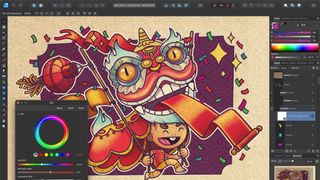

Specifications
Reasons to buy
Reasons to avoid
If you're put off by the hefty monthly or annual cost of Adobe's subscription model, there are now some serious alternatives as the best graphic design software for vector design. The most notable contender is Serif's Affinity Designer. Available for a one-off payment, Affinity Designer comes closest out of all the software we've tried in matching the breadth of Illustrator's feature set.
In fact, Affinity Designer even offers some tools you don't get on Illustrator, such as infinite redos and one million per cent-plus zoom, and we found that it tends to run faster than Adobe illustrator too. It can handle both Illustrator AI and Photoshop PSD files, so you don't have to worry about compatibility if colleagues or clients work with Adobe's software. But the best part, of course, is that you only have to make a one-time payment, and a fairly reasonable one at that. There are no subscription fees, but you still get software updates when they're released, making it a lot more affordable in the long term, or even medium term.
See our full Affinity Designer review for more details.


Specifications
Reasons to buy
Reasons to avoid
If you're looking for the best graphic design software specifically for UI design, prototyping and/or making icons, then you might want to consider Sketch (at least if you work on a Mac). It doesn't have the depth of software like Adobe Illustrator or Affinity Designer, but we think it has everything that most people need for UI design, and is actually easier to use if you only have that purpose thanks to its stripped down, minimal interface.
We found that Sketch makes it easy to get started, with less of a learning curve than those of more fully featured vector design software. It offers a good range of features if you need them, though, thanks to a big library of plugins. The software came in for a major revamp in 2021, with the addition of better collaboration features. For example, developers can now view, inspect, and measure your Sketch designs in any browser on any operating system.
Read our full Sketch review for more details on the software.

Specifications
Reasons to buy
Reasons to avoid
Once the market leader in vector design, CorelDRAW lost some of its popularity to Adobe Illustrator, but it still has legions of loyal fans and it continues to upgrade its offering to keep up with most of the features offered by competitors. It's now available in two formats: in CorelDRAW Standard, which is marketed to amateur enthusiasts, and CorelDRAW Graphics Suite, which is a larger package of tools aimed at professional designers.
Just to make things more confusing, the latter itself comes in two versions, with CorelDRAW Graphics Suite 2021 available for a one-off payment but the new 2022 version requiring a subscription. The subscription model gives you access to the latest features, which include dynamic asset management and a faster adjustments docker for photo editing.
It takes a while to get your head around the different options, but we reckon CorelDRAW is now actually the most flexible graphic design software, since you can choose between buying the software outright or subscribing for access to newer features. It also now has an iPad app and a browser-based app as well as the Windows and Mac desktop software, giving you more flexibility.
The CorelDRAW Graphics Suite 2022 includes the pixel-based CorelPHOTO-PAINT and a RAW image editor for a similar price to an Adobe single-app subscription. The package includes a lot of the same capabilities as Adobe Illustrator and Affinity Serif, and fans of CorelDRAW insist that its interface is easier to use.
We think a lot of that comes down to preference and what you're familiar with, however, and we'd recommend taking out the free trial to see how you find it. If you do opt for Corel, the good news is that there's no issue with importing and exporting AI, PSD and PDF files. See our full CorelDRAW review for a more detailed evaluation.
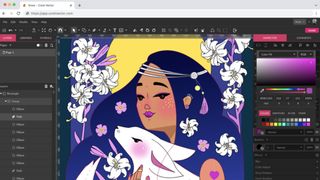
05. Corel Vector
Our expert review:
Specifications
Reasons to buy
Reasons to avoid
Corel Vector is our pick as the best vector software for those on a budget. Formerly called Gravit Designer, the browser-based app now requires a subscription (Gravit Designer had a free option), but the annual cost is cheaper than the full professional CorelDRAW Graphics Suite.
We like the clean and intuitive interface, and we've found that it can cope with a lot of design jobs, from icon design and prototyping to vector illustration and animation. You can export files as PDF, SVG or bitmap, and you access your work wherever you are – as long as you have an internet connection.
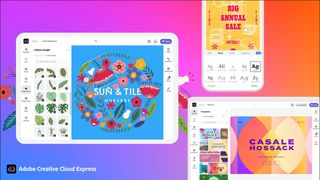
Specifications
Reasons to buy
Reasons to avoid
Formerly Adobe Spark, Adobe Creative Cloud Express (or CC Express) is the newest addition to the Adobe family, and the brand's attempt to compete with affordable entry-level graphic design software like Canva and Picsart. Available online and as a mobile app for both iOS and Android, it takes the basic photo/video editing tools and the Asset library from across Adobe's suite of apps and puts them into an accessible one-stop package.
Best of all the app is free to download and free to use forever – for a limited number of basic tools. You can unlock more features if you sign up for a premium CC express account. And there's a 30-day free trial of the premium version so you can try it out before you commit. See our Adobe Creative Cloud Express review for more details.
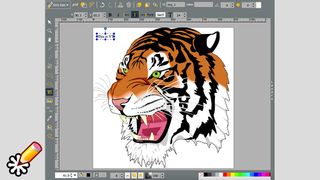
07. SVG-Edit
Our expert review:
Specifications
Reasons to buy
Reasons to avoid
SVG-Edit is the best free graphic design software for quick vector jobs. The open-source browser-based app lets you edit and create SVG files using a standard vector toolset. There's nothing to download, as the software works straight in your web browser in an intuitive, if retro-looking interface. It doesn't have a big range of advanced tools, but then that's not the idea. For simple vectors, or even slightly more detailed ones, it'll do the job just fine. And best of all, it's genuinely completely free. The repository is on GitHub.
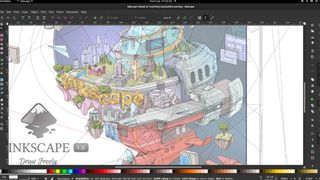
08. Inkscape
Our expert review:
Specifications
Reasons to buy
Reasons to avoid
Inkscape is another open-source SVG editor that boasts advanced features such as markers, cloned objects and alpha blending. Its interface is less sophisticated than Illustrator's, but it's still capable of producing quite sophisticated artwork – and it's free! Perhaps best of all, there's a good range of tutorials and an active community of users and developers.
Inkscape supports several colour modes, and it'll import Illustrator files too, as well as enable you to trace bitmap images. Just note that it does not currently support CMYK, which can seriously limit your options for printing.
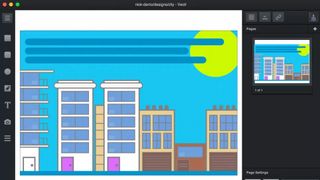
09. Vectr
Our expert review:
Specifications
Reasons to buy
Reasons to avoid
Vectr is the best free vector design software for working collaboratively. Along with vector tools, filters, shadows and fonts, it includes a great set of live collaboration and synchronisation options. These make it easy to team up with colleagues or clients, so they can see what you're doing and provide feedback on your work.
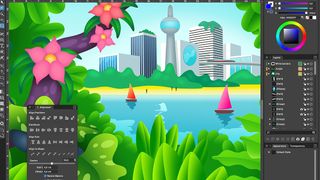
10. VectorStyler
Our expert review:
Specifications
Reasons to buy
Reasons to avoid
VectorStyler is a relative newcomer among the best vector software. Initially available only for Mac, it's now available for Windows too. Its big selling point is a wide range of scalable vector brushes plus the inclusion of some of the tools that are missing in other alternatives to Adobe Illustrator, such as shape builder, a blend tool and pattern tool. It can open and import Illustrator files, and you can import AI brush collections as well as create vector brushes from artwork and dynamically link brush content to editable artwork.
We found the user interface to be very easy to understand, and tools like the warp options are very intuitive. However, while we found some of the unique filters and tools interesting, VectorStyler is twice the price of Affinity Designer, our top pick as the best non-subscription vector software. It does offer some of the tools that Affinity Designer lacks, so it's worth considering if you need them, but we find it's usually possible to find a workaround.
Another downside is that unlike Adobe Illustrator and Affinity Designer, you don't have that wider ecosystem that lets you switch quickly and easily between different apps (with Affinity you have that in Affinity Photo, Publisher and Designer). While VectorStyle can do a lot, it doesn't have the pixel tools that you get with Affinity and Photoshop. There's also no iPad app, a big advantage of Illustrator and Affinity Designer for graphic designers who work on the go or with a stylus.
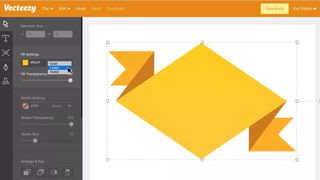
11. Vecteezy
Our expert review:
Specifications
Reasons to buy
Reasons to avoid
Vecteezy is another in-browser vector editor. If offers a ton of free ready-made vectors that you can customise. However, to use the full feature set including the vector editor to build your own designs from scratch, you'll need a subscription, which started at a reasonable $3.60 a month at the time of writing. It's easy to use and has some nice features such as advanced transformations and keyboard shortcuts. See more about how it works in our guide to how to use Vecteezy.
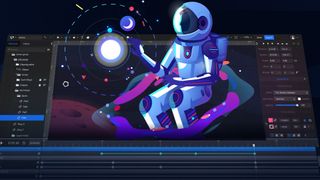
12. SVGator
Our expert review:
Specifications
Reasons to buy
Reasons to avoid
For anyone looking to create SVG animations without needing to code, browser-based SVGator makes things super-easy. We found the user interface to be intuitive, making it very quick to get started. Whether you're animating logos or illustrations, the tools are all there to create basic but effective animations in a single light SVG file.
Again, being a browser-based platform, it has certain limitations. Obviously you need a stable internet connection, and the lack of CTRL Z support can be frustrating for undoing things. Simple animations work like a dream but anything more complex, like nesting shapes, repeating animations or moving multiple shapes can become a long-winded. You have to pay for the Pro version, but that should be worth it if you're doing a lot of small animations.
The best image editing and drawing software


Specifications
Reasons to buy
Reasons to avoid
You probably don't need us to tell you that Adobe's Photoshop is the industry-standard software for image editing. The package has long been a household name and just as Illustrator remains the best graphic design software for vector work thanks to its regular updates, Photoshop continues to dominate in image editing. It can do a lot more than just image editing, too: everything from touching up photos to digital drawing and painting, 3D modelling and UX design. It's a fully featured package, and Adobe's been adding powerful AI tools under its Adobe Firefly and Sensei banners to allow you to do things like remove backgrounds in just a couple of clicks, and even generate new ones and fill in images with generative fill and expand features.
As with Illustrator, you'll need a subscription, but then if you're a working designer a subscription to Creative Cloud is almost a must, granting you access to Photoshop, Illustrator, InDesign and more. As with all Creative Cloud tools, you get regular updates for free. See our full Photoshop 2024 review for more details. For help understanding the different payment options, see our article on How to download Photoshop.
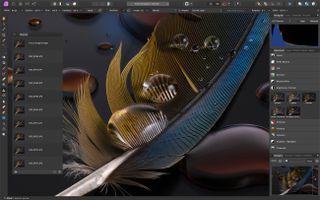

Specifications
Reasons to buy
Reasons to avoid
Again, if you don't want the regular cost of a subscription, the best option comes from Serif's Affinity series. Affinity Photo is available for a very reasonable one-off payment for the desktop app, and a separate payment for the iPad app, and it offers a close match for most of Photoshop's features, it has all the photo retouching tools most people need, as well as advanced painting tools with a huge library of brushes. You can import and export PSD files and even smart objects. Users get updates for free, with the latest big revamp in 2023 (2.0) adding numerous new features.
See our full Affinity Photo review for more details.
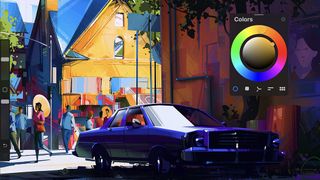

Specifications
Reasons to buy
Reasons to avoid
Both Photoshop and Affinity Photo are now available for the iPad. But if all you need is a set of drawing tools, without a bunch of design-related extras, Procreate's probably the best graphic design software for you. Procreate has a great reputation within the artist community, and for good reason. It offers lots of beautiful brushes and helpful tools, such as QuickShape, which give you perfect shapes every time, and StreamLine, for turning your rough strokes into smooth curves. You can even paint filters straight onto your canvas.
At a price that's even lower than Affinity Photo's, this is an essential iPad app. The iPhone version, Procreate Pocket, is well worth checking out too.
Check out our complete Procreate review.
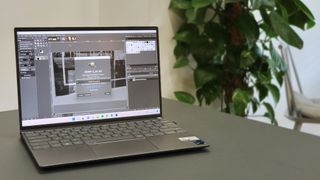
Specifications
Reasons to buy
Reasons to avoid
Even the best free graphic design software can't really come close to Photoshop's abilities. but, despite the offputting name, GIMP (GNU Image Manipulation Program) does a very good job. By default, the interface is kind of clunky, but it's easy to update it to a more Adobe-style feel. Either way, GIMP contains a lot of powerful design tools. You'll be able to work with all the popular file formats without trouble. And you'll find a very capable file manager built in, along similar lines to Adobe's Bridge. See our full GIMP review for more details.
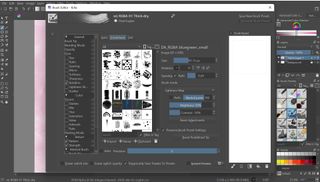
17. Krita
Our expert review:
Specifications
Reasons to buy
Reasons to avoid
Krita is a free and open-source painting tool that's been around since 1999. It's popular in the VFX industry and with concept artists, illustrators, matte and texture artists. It's famous for its huge collection of brushes, as well as brush stabilisers for smoothing out shaky lines. And if you want to tweak things further, there are loads of plugins available, ranging from advanced filters to painting assistants for perspective work. When we reviewed Krita version 5.0 in 2022, we found that it's stability had been much approved and doesn't suck up resources like it could in the past. Also see our Krita tutorial.

Specifications
Reasons to buy
Reasons to avoid
Canva is among the best free graphic design software for editing images. We found it makes it very easy to carry out quick changes such as cropping and resizing images, or adding filters, frames, text, and effects. You can do everything in the browser, or via a mobile app, and there are no restrictions on editing images with the free version; for example, no watermarks are applied.
Canva is also more than an image editor, it's fully fledged graphic design software featuring a colour palette tool, font combination picker, a photo collage maker, and more. There's even a dedicated infographic maker (see our guide to the best infographic makers for more options there). While it doesn't quite match all the abilities of Photoshop, Canva is pretty impressive for a free app. You can use it in the browser for the full experience, but most of its tools are also available for both Android and iOS.
The paid version, Canva Pro, also has some interesting features. When we reviewed it, we liked Canva Pro’s Brand Kit, which could be a useful feature to help small companies stay on-brand across their designs, allowing you to set pre-set brand fonts, logos, colours and pre-designed templates. We also found the resize and the background remover tools very easy to use, and perfect for those with little experience of using design software. See our full Canva review for more details.
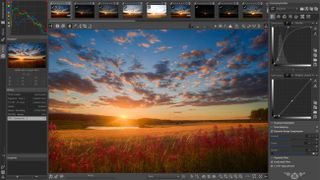
19. RawTherapee
Our expert review:
Specifications
Reasons to buy
Reasons to avoid
RawTherapee is free, open-source software that makes it easy to fix your photos. It's not fully fledged image editing software, but you can use it to correct distortion, boost colours, recover details and much more. It can also speed up your workflow by allowing you to batch process images. You can also send images to other software, such as GIMP (number 16 above).
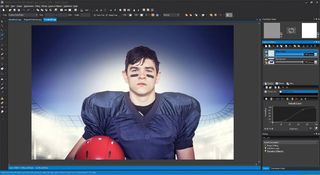
20. Photo Pos Pro
Our expert review:
Specifications
Reasons to buy
Reasons to avoid
Photo Pos Pro is simple, but perfect for amateurs and enthusiasts looking for an easy way to edit their images. This free software boasts a very user-friendly interface, as well as an in-depth help system, to get you started. It's built with image enhancement and editing in mind, but it'll also stretch to more advanced techniques, with plenty of expansions and plugins available.
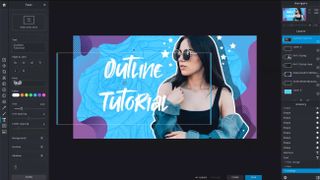
21. Pixlr
Our expert review:
Specifications
Reasons to buy
Reasons to avoid
Pixlr is a suite of three apps that work in the browser or via iOS and Android apps. You don't have to sign up to use them, and you can get going straight away.
Pixlr X is a quick and easy photo editing tool and ideal for giving your work a quick boost with one-click edits and artistic effects. Pixlr E is a more substantial image editing app with a collection of useful editing tools. Pixlr BG is an AI-powered tool designed to remove the backgrounds from photos.
The big selling point for Pixlr used to be its free version, but this is no longer available. However, you can work on and save up to three images per day without subscribing, so if that's all you need you won't have to pay.
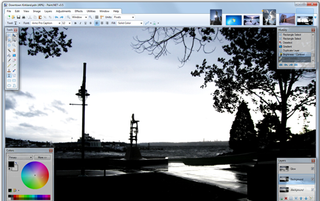
22. Paint.NET
Our expert review:
Specifications
Reasons to buy
Reasons to avoid
Paint.NET started out as an updated version of the Paint app included with early versions of Windows. And that may not fill you with hope, it's actually pretty capable. It's easy to use, for one, and there's a range of effects available, allowing you to easily create fake perspective, blend and push pixels around the canvas, tile and repeat selections, and more.
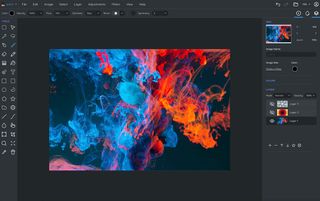
23. Sumo Paint
Our expert review:
Specifications
Reasons to buy
Reasons to avoid
Sumo Paint is a browser-based image editor, with all the standard features you'd expect from a desktop tool. These include brushes, pencils, shapes, text, cloning and gradients, accessible from a floating toolbar. A Pro version is available for a monthly sub, and Sumo also offers other online tools, including a photo editor and a 3D editor.
The best 3D software


Specifications
Reasons to buy
Reasons to avoid
Autodesk Maya is the best graphic design software for 3D work, and is commonly used across the industry, right up to top studios like Pixar or Framestore. It contains huge range of tools and features covering pretty much the entire 3D workflow, from modelling through to rendering and animation. Be warned, though, the price and the time it'll take you to learn will be off-putting to anyone who's not well-versed in 3D. However, if you're a student or educator, you can sign up for free educational access to the Autodesk range. See our full Maya 2024 review.


Specifications
Reasons to buy
Reasons to avoid
Looking for the best graphic design software for 3D, but want something easier to learn than Autodesk Maya? Maxon's Cinema 4D is worth investigating. It's relatively easy to get to grips with, with a huge and supportive community as well as loads of tutorials and a dedicated training site.
The software features volumetric modelling tools that make it easier to get impressive results when you're starting out, as well as a full-featured parametric modelling toolset and the ability to extend its functionality with plugins. It plays nicely with many Adobe tools, most strikingly After Effects. And as its maker Maxon is in the process of acquiring Zbrush, we expect there'll be some nice integrations there soon, too.
Like all good 3D software, Cinema 4D is expensive, but there's a 14-day trial version as well as a free education version for students and teachers. Read our full Cinema 4D review and see our selection of Cinema 4D tutorials for more details.


Specifications
Reasons to buy
Reasons to avoid
Another industry standard tool, 3ds Max is a Windows-only app with a powerful set of features. Easier to learn than Maya, but no less capable, it features modelling, fluid simulation, hair and fur, and pretty much everything you need for character rigging and animation. There's a 30-day trial version available, and you can use the software for free if you're in education. Read our full 3ds Max review and read our selection of 3ds Max tutorials for more details.
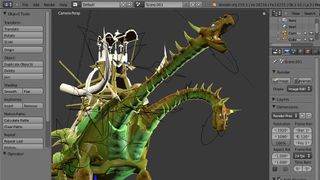
Specifications
Reasons to buy
Reasons to avoid
Blender is hands-down the best free graphic design software for 3D work. Free and open source, it's a full 3D content creation suite with a hugely impressive stack of tools. Its makers are constantly working on its development, and you can pretty much do anything 3D related with this software, including modelling, texturing, animation, rendering and compositing. Although it's not widely used at the top level of the industry, a number of major films have been made with it, including Netflix's Next Gen. For more details, read our full Blender review and our collection of Blender tutorials.

28. SketchUp Free
Our expert review:
Specifications
Reasons to buy
Reasons to avoid
Getting started in 3D can be quite the learning curve. SketchUp Free provides a friendly and gentle introduction. This free software starts you off by simply drawing lines and shapes, which you can then push and pull around to turn into 3D forms. For extra inspiration, you can search the SketchUp 3D Warehouse's huge library of models and download them for free.

29. Daz Studio
Our expert review:
Specifications
Reasons to buy
Reasons to avoid
Daz Studio is a 3D figure customisation, posing and animation tool that enables artists of all skill levels to create digital art using virtual people, animals, props, vehicles, accessories and environments. It allows you to create custom 3D characters and avatars, design virtual environments, produce graphic design elements and much more – making it one of the best graphic design software choices out there.
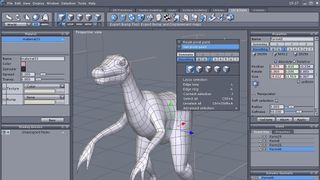
30. Hexagon
Our expert review:
Specifications
Reasons to buy
Reasons to avoid
Here's another great choice for anyone new to 3D. Hexagon is free modelling software from Daz 3D that includes a range of powerful tools, including Daz Studio 3D Bridge, sculpted primitives, freehand modelling brushes, micro-displacement modelling tools, comprehensive UV-mapping modules, advanced 3D paint, and instant ambient occlusion. Use it alongside Daz Studio for a complete 3D suite.
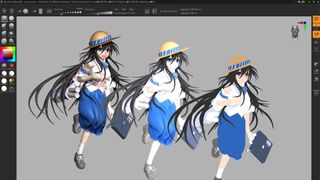
31. ZBrushCoreMini
Our expert review:
Specifications
Reasons to buy
Reasons to avoid
If you want to get a feel for digital sculpting, Pixologic's ZBrushCoreMini is a fantastic starting point. If you're a 3D pro, meanwhile, you'll find it a quick and easy tool for banging out concepts. ZBrushCoreMini is based on Pixologic's ZBrush, the most widely-used digital sculpting application in today's market. So, when you're ready to move on to the next level, skills learned here can be directly translated into ZBrush. Note that this 3D software is free for non-commercial use only.
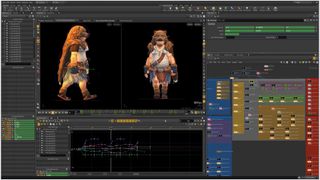
32. Houdini Apprentice
Our expert review:
Specifications
Reasons to buy
Reasons to avoid
Houdini is a professional VFX and 3D animation tool that's popular across the media industry. It's very expensive piece of software, but you can get Apprentice version for free. The only drawback is that it's purely for learning purposes, so you can't use what you create for commercial purposes.
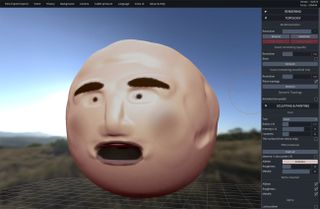
33. SculptGL
Our expert review:
Specifications
Reasons to buy
Reasons to avoid
Want to try some digital sculpting right now without having to download anything? Stéphane Ginier's SculptGL runs right in the browser; although there's also a downloadable version and a Chrome app. And it provides you with plenty of sculpting tools as well as PBR vertex painting and alpha texture support.
SculptGL supports multi-resolution sculpting and is capable of voxel remeshing and dynamic retopology. And it'll import and export OBJ, PLY and STL files. There are more powerful free 3D tools to be had, but as a free app, SculptGL is well worth having to hand.
The best data visualisation software
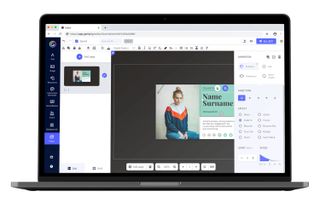
34. Genially
Our expert review:
Specifications
Reasons to buy
Reasons to avoid
Looking for the best graphic design software for data visualisation? We recommend Genially. Perfect creating everything from infographics to quizzes and presentations, it enables you to make engaging, visually-appealing and delightfully shareable content quickly and easily.
There's a free version to get you started, with plenty of free templates and resources, but your designs will be watermarked. To remove this, and enjoy advanced features such as offline viewing, you'll need to move to a paid plan.
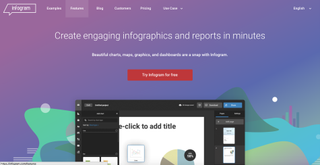
35. Infogram
Our expert review:
Specifications
Reasons to buy
Reasons to avoid
Infogram is a useful free tool for creating graphs, charts and maps, with the added bonus of adding images and videos if you want to create engaging infographics. You can arrange your data in a simple spreadsheet that you can then edit to see the results in real time. And when you're satisfied with the result you can publish it to the Infogram website to embed it on your own site, or share via social media. Also see our guide to the best infographic maker.
FAQs
What software do graphic designers use?
For most working graphic designers, Adobe’s Creative Cloud suite of apps is the standard choice. Its main tools for graphic design are Photoshop (raster image editing), Illustrator (vector image editing), InDesign (desktop publishing) and After Effects (motion design). You can subscribe to the Creative Cloud suite as a whole, or take out a single-app subscription. Either way, you'll also get the Behance portfolio service and access to Adobe Fonts. See our guide to getting a Creative Cloud discount to make sure you find the best price.
For graphic designers on a budget, Affinity's suite of apps provide a close approximation to Adobe's tools, namely Affinity Photo (which rivals Photoshop), Affinity Designer (which rivals Illustator) and Affinity Publisher (which rivals InDesign). There is no equivalent, however, to After Effects.
What's the best graphic design software for beginners?
If you're new to graphic design, there are a number of apps that allow you to get started for free. One of our top recommendations is Canva, a lightweight app for making quick designs in your browser. You don’t need to download anything, and you don’t have to pay either, unless you want to unlock advanced features and extra resources.
While you learn graphic design theory, Canva will allow you to put it into practice. Once you've reached a certain level of expertise, you'll then naturally gravitate towards one of the paid apps on our list to get more sophisticated tools.
Is the best free graphic design software any good?
Logically, most of the best graphic design software has a cost since developing and updating the programs requires investment. If you're working as a professional designer, or hoping to, then you'll almost certainly want to invest in the best graphic design software overall.
That doesn't necessarily mean you need to subscribe to Adobe's Creative Cloud since there are now many competitive subscription-free alternatives, but you're likely to find that agencies and even direct clients may expect you to use Illustrator and Photoshop (some may even have a preference for other software).
However, the best free graphic design software is worth considering if you're just starting out or only need to create occasional design work for personal projects. There are completely free open-source programs like the free vector software SVG Edit and Inkscape and the image-editing software GIMP that may offer you everything you need depending on your requirements. Their interfaces may look a little more rustic but they do the job for a lot of creative tasks.
How to choose the best graphic design software
Finding the ideal graphic design software for you means considering a range of factors. The first is what you actually want it to do. Assess the specific design tasks you'll be undertaking, such as illustration, photo editing, or layout design, and opt for software that excels in those areas.
Secondly, think about your skill level, as some programs are more user-friendly for beginners, while others offer advanced features for seasoned professionals that newbies may be hopelessly confused by. Take into account the learning curve and available support resources, including tutorials and community forums.
A third factor is your operating system and hardware. It often surprises people to learn that even the most popular software is limited to either Windows, macOS, iOS or Android, so do check this first. Finally, software can be expensive, so it's worth exploring free trial versions before committing to a purchase to ensure it aligns with your workflow and preferences.
How we test the best graphic design software
Our experts test graphic design software in a way that's both comprehensive and mimics real-world use. Firstly, we assess the user interface for intuitiveness and efficiency, considering how easy it will be for both beginners and advanced users to pick up. We'll then put functionality and feature sets to the test across common design tasks like illustration, photo editing, and layout design, to ensure it actually works in practice and delivers what it promises. We'll also pay attention to compatibility with various operating systems and hardware configurations; performance, including speed and responsiveness; and the availability of support resources, such as tutorials and customer service.
Related articles:
- Could these be the hottest design trends of 2023?
- The best laptops for graphic design
- Rebelle 6 review
